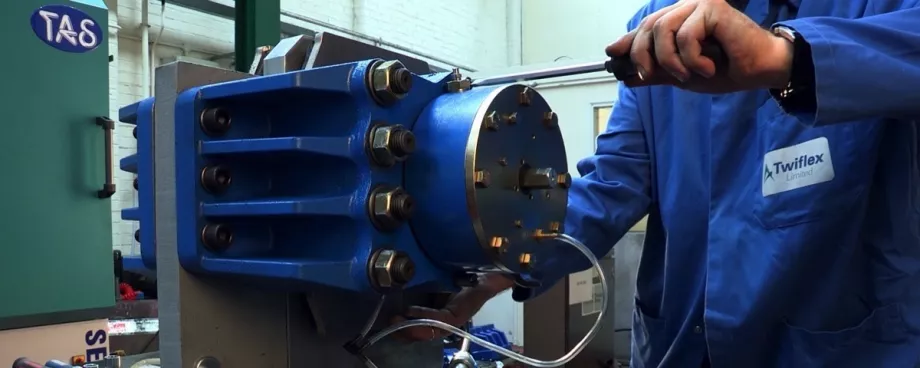(From the archive of ”bulk solids handling", article published in Vol. 36 (2016) No. 2/3 , ©2016 bulk-online.com)As with all things mechanical, it is possible to improve the reliability and life span of all braking designs with good specification, correct installation and correct maintenance procedures. Steve Powell, Product Manager at Twiflex, one of world’s most recognised heavy duty brake brands and part of the global Altra Industrial Motion group, offers some advice on installation and maintenance to optimise the performance and service life of these very important systems.
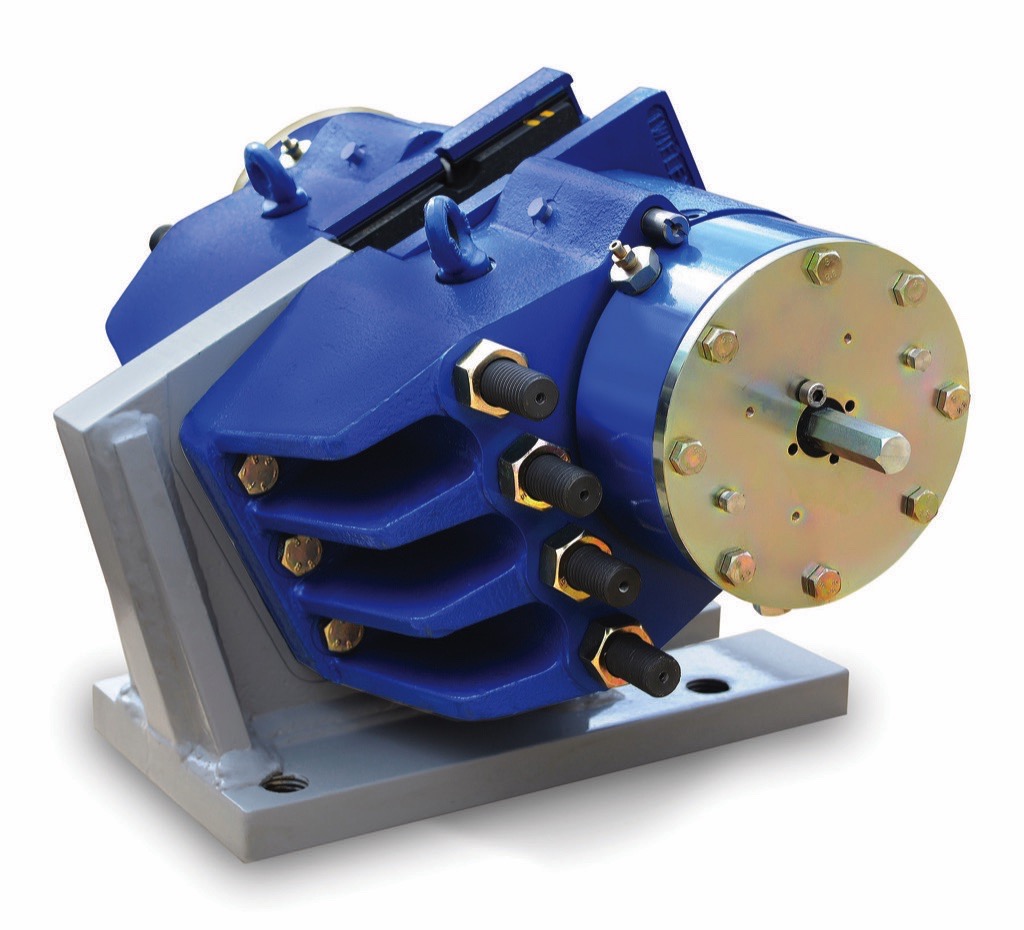
Braking systems perform a crucial role in many industrial processes and the variety of their design bears out the huge number of applications they are involved in. Due to the individual nature of many applications both designers and manufacturers are also able to adapt standard designs to suit some tasks while others require a completely bespoke approach.Firstly, once a system is in place it is essential that the operating loads and conditions that are specified by the manufacturer are not exceeded. The process of selecting a suitable product for a particular application forms the basis of this requirement and it is advisable that experienced applications engineers are consulted who can offer guidance. Manufacturers such as Twiflex offer this consultancy service as standard to make sure that the right brake system is designed and specified.
Installation
Having specified the required design, getting the installation correct is essential if the braking components are going to deliver the expected long service life. In many cases it can be advisable to make use of the expertise and experience of the installation engineers available from the manufacturer.
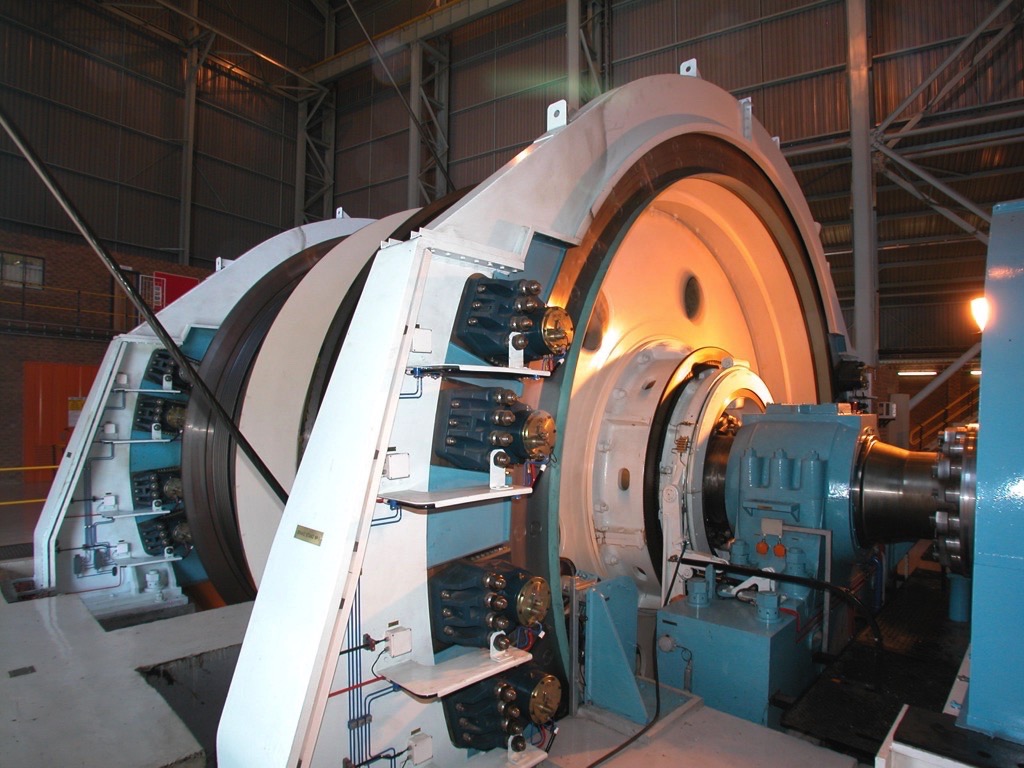
Ideally, heavy duty braking systems should be designed with two callipers on each disc, mounted diametrically opposite to each other, in order to neutralise the braking torque reaction forces on the shaft bearings. Sufficient space should also be allowed for access to the callipers for routine inspection and maintenance as well as for pad renewal.Following expert advice from the manufacturer is crucial, especially on topics such as hydraulic fluid, which should be checked for compatibility with the seals in the system. Using the incorrect grade of oil can cause seals to swell which may result in reduced braking efficiency. Alternatively, the oil seals may breakdown prematurely and cause a loss of oil pressure.As a global organisation, Twiflex is able to offer assistance, advice and training both remotely and on site, anywhere in the world. Based on the size, complexity and importance of many heavy duty braking systems, it is often a cost effective option to make use of these services.
Running-In
Having correctly assembled and installed the braking system, it is important to carefully follow the initial running-in procedure as it can have a significant impact on the overall performance of the braking system. The usual procedure consists of two phases: the bedding-in of the pads on the disc and the pad conditioning. The former maximises the area of contact between the pads and the disc while the latter involves a gradual increase in heat generation that creates changes in the pad material which are necessary to develop the full braking potential.Although procedures will vary between individual applications, the principle during this period is to work the brake lightly at first to remove any pad high spots and so achieve something approaching 100% pad contact with the disc. After this, progressively heavier braking can be applied until the full rated duty is achieved. It is important to monitor the disc temperature throughout the bedding-in process and allow sufficient cooling time to prevent overheating.In most cases 250°C is a safe peak braking path temperature, but this can be difficult to measure. In emergency brake applications much higher temperatures can be required, but they should be allowed to cool down to near ambient temperature before re-testing.
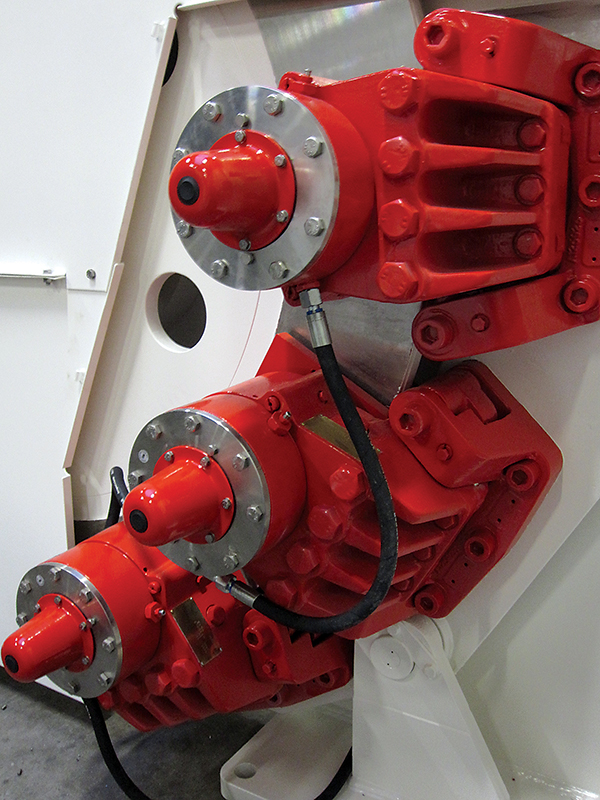
Of course the procedures described so far involve dynamic braking systems, but if the brake is only to be used for static holding duties it is not practicable to operate it with the disc in motion. In these situations the pad/disc interface will rarely develop even 50% of its friction potential; often less. However, as this can be anticipated during specification it should have been allowed for in the original design.In general some improvements can be made to the braking efficiency by removing the high spots on the pads to improve the total area of contact. However, if sufficient braking force is still not generated, there are some further options to consider. Firstly, it may be advisable to change pad material to a more efficient variety. Secondly, it is possible to adjust the air gap in spring applied units or increase the hydraulic pressure in direct-acting components.
Operation
Once the new braking system has been properly bedded-in and conditioned it can be commissioned and operated on a full time basis. During the first week of normal operations it is important that a number of regular maintenance checks are made to ensure that there is no unexpected fluid leakage and that brake operation is smooth.Having completed the running-in period, the security of all bolted connections and pipe connections should be checked, while the calliper mounting bolts should also be paint marked to provide a visual check of any movement.
Regular maintenance
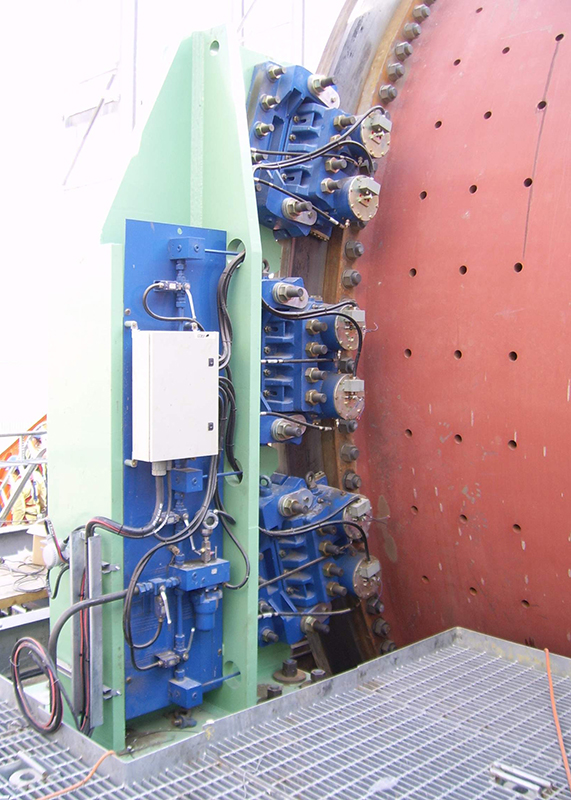
With all of the necessary checks and certifications in place the braking system finally enters regular service. From this point on, in addition to any statutory requirements, it is important to follow a regular maintenance inspection programme as stipulated by the manufacturer.Clearly brake pad wear needs to be monitored according to the application and any adjustments made accordingly. In some components additional monitoring equipment can be installed to provide warnings about friction pad wear and adjustment. When the brake pad is nearing the end of its service life it will need to be replaced and the procedure for this will depend on the design installed.
Parked ‘Off’
One of the features offered by Twiflex within its range is the ‘parked off’ feature. This is different to other solutions in that it actively removes the spring force from the brake while it’s powered off, meaning there is no force acting on the pad which could lead to unexpected closures.
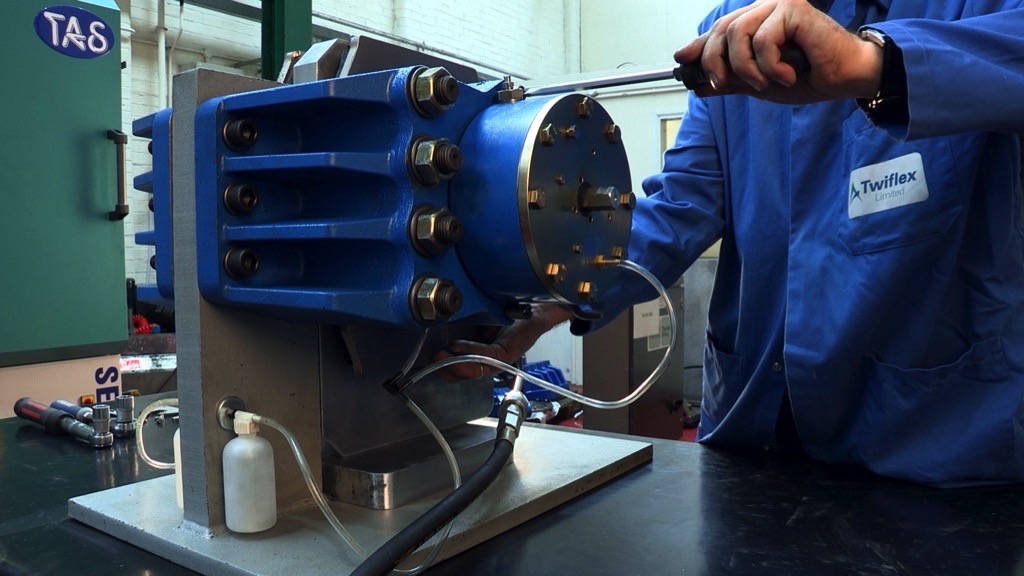
With hydraulic pressure applied, maintenance engineers can unwind an adjusting spindle, which releases the spring pack. When the hydraulic pressure is removed the springs have the freedom to extend without acting on the brake. At this point the spring load and hydraulic pressure are both zero and the brake has no stored energy.The ‘parked off’ feature has a number of benefits. First, basic maintenance such as brake pad replacement can be carried out quickly and with a reduced risk of unexpected closure when compared to conventional brake designs. Second, the brake force can be easily adjusted by setting the brake to ‘parked off’ and adjusting the number of shims from the end cover.Finally, installation is made easier and the brake can be installed without the need for hydraulic pressure.
Replacement Parts
Manufacturers of braking systems have designed the components to work together within strict tolerances so that they meet the required specification, including a sufficient safety margin. It is therefore advisable to replace any parts with those prescribed by the manufacturer in order to ensure continued reliable service.While the use of third party components may have an initial cost benefit, the long term performance and reliability may not equal that of the OEM component. Very often, cheaper components have different chemical or mechanical properties and tolerances that lead to reduced performance and a shorter service life.Twiflex offers a complete after sales service for its entire product range, including operation and maintenance manuals that can be downloaded from its website. As part of the Altra Industrial Motion Group it can also provide onsite technical assistance to any customer across the globe.By ensuring that the correct installation and maintenance procedures are followed, operators of large industrial equipment can deliver long term cost savings to their operation. Working with the original manufacturer also ensures that the long term efficiency and reliability of this essential equipment can be sustained.
| About the Author | |
| Philip HarveyArea Sales ManagerTwiflex Ltd., United Kingdom |
■










